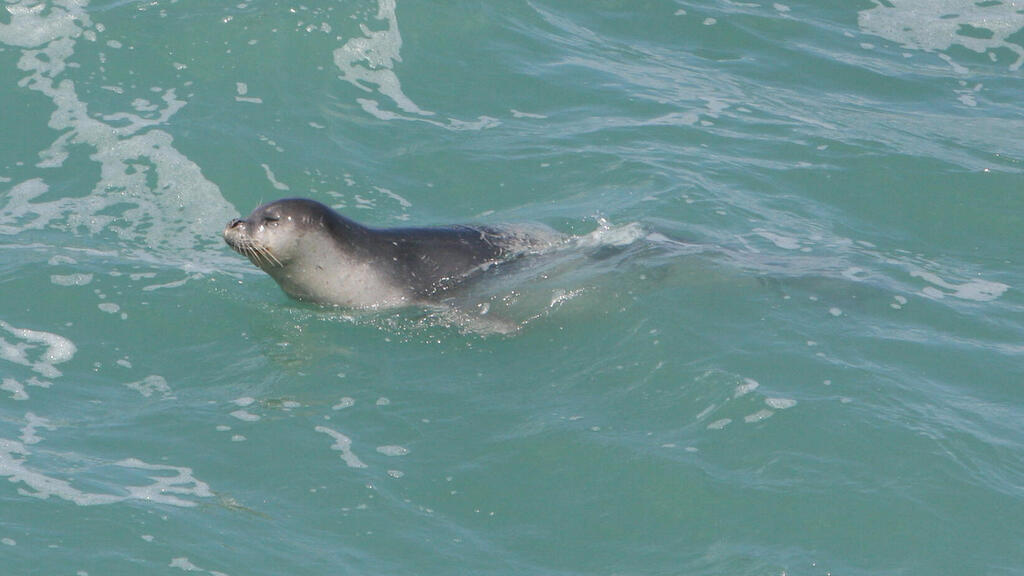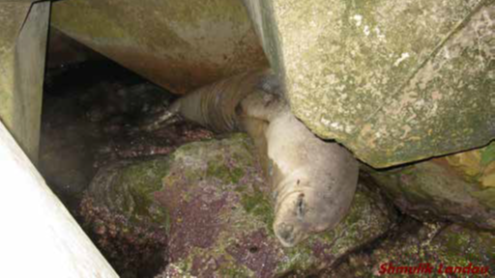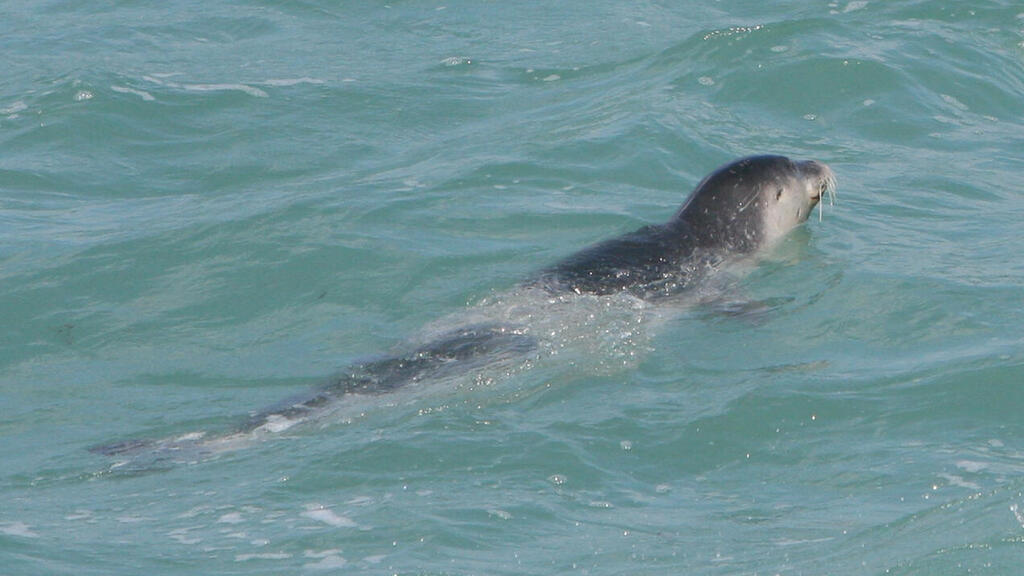An Israeli environmentalist group published last week a survey of the country's coasts it examined that could serve as potential habitats for the rare Mediterranean monk seals that were once common in the region.
In 2010, a Mediterranean monk seal was sighted off the coast of the country for the first time after an absence of about half a century.
Mediterranean seal in Israel
(Video: Maya Elasar, Roie Segal)
Since then, individual seals have been observed in the area nearly 100 times. The first documentation of the seals sparked great joy, which got researchers thinking about how to restore this unique animal as a part of the ecosystem on the country’s coasts.
The survey was conducted by Dr. Mia Elasar of the marine environmentalist group Delphis; Dr. Luigi Bundone, a researcher of Mediterranean monk seals at the European marine environmentalist group Archipelagos; and Dr. Aviad Scheinin, head of the Dolphin and Sea Center at Delphis and head of the predator-prey department at the Morris Kahn Marine Research Station at the University of Haifa.
The researchers concluded that there aren’t enough suitable caves along the shores to serve as a habitat for the seals, caused by rock collapses, floods caused by rising sea levels, and an increase in tourism.
The survey stated that animals arriving at Israeli shores will find very few caves suitable for a short rest, but not for prolonged living. In order to encourage the seals to establish permanent populations in the area and support the seal population, the survey recommended the restoration of two existing caves.
The survey also recommended creating artificial caves that will suit the needs of the animals and allow them to stay longer in the area.
The Mediterranean monk seal, of the earless seal family, is one of the rarest mammals in the world and is in grave danger of extinction. The seals live only in the Mediterranean Sea. It measures about 2.5 meters in length and weighs about 350 kg.
Before the establishment of Israel, sightings of these seals were more common. Reports of individual sightings were documented from the 1920s through 1958. In 2010, reports of monk seals began to surface on beaches where they hadn’t been observed for several decades, such as in Syria, Lebanon, and Israel.
Today, the population of Mediterranean monk seals is estimated at around 900 individuals, with approximately 400 of them living along the coasts of Greece, Cyprus, and Turkey.
In recent years, Delphis researchers have joined researchers from environmentalist groups in Spain, Greece, Cyprus, and other eastern Mediterranean countries for a joint project aimed at protecting this species, in which the survey was held.
“The Mediterranean monk seal was hardly seen until 30 years ago. It’s a species that was in serious danger of extinction for years, and predictions were that it would disappear by 2020. Contrary to the predictions, the numbers are rising,” Dr. Mia Elasar said.
According to her, "most of the population stays in Greece, and because the population grew, the seals have begun to look for more breeding grounds. They’re starting to roam, and there’s a southward migration from Greece to countries such as Cyprus, Turkey, Syria, Lebanon, and Israel.”
“As a result of these observations, Israel entered into a European conservation project to save the seals. We understood that in order to make sure the seals continue to prosper, regional cooperation is necessary,” she added.
"With the observations, we were able to identify three different seals based on their markings. We know that there were at least three different individuals. A female, who returned several times, a male, and another young cub. However, we noticed the seals didn’t stay for more than a day or two. We wondered why, and therefore conducted the survey,” Dr. Elasar explained.
According to her, the Israeli survey team consulted with representatives from Cyprus, who told them they have been restoring collapsed caves to their natural state. "In Israel, we’ve identified caves that can be restored, and if we create a place for the seals to live, maybe we’ll see dozens of monk seals around in 15 years," Dr. Elasar said.
Dr. Elasar also explained why the seals’ population has dwindled to an alarming degree. "The decline began around 1400 due to hunting. Later, the cubs were taken from caves and displayed in circuses, where they didn’t survive.”
“In addition, fishermen didn’t care for the animals since they contested fishing zones. Finally, caves near the coast where the seals lived and bred also disappeared due to tourism and collapse.”
"Subsequently, a conservation program was implemented that led to their hunting being banned, so the population began to recover,” she added.






